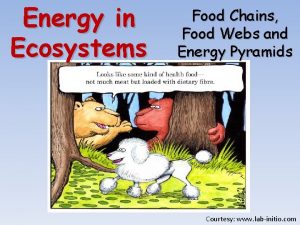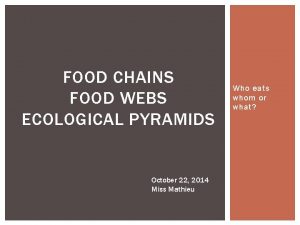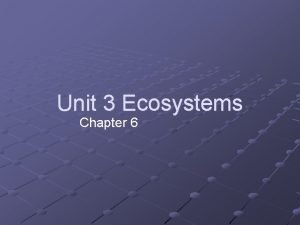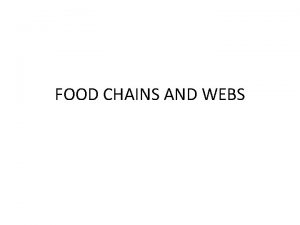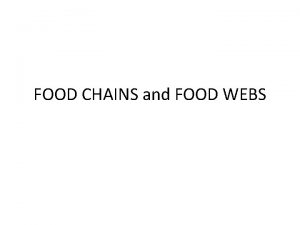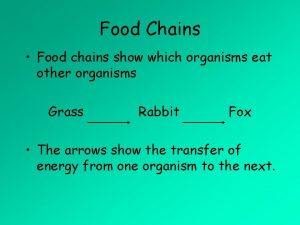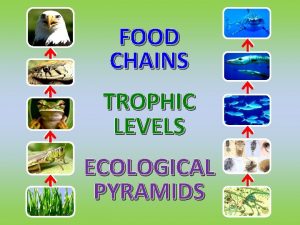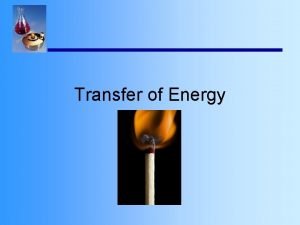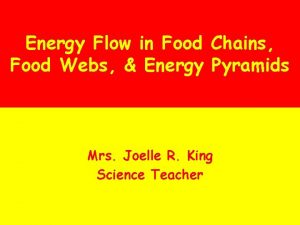Food Chains and Energy Transfer 2 Food Chains










- Slides: 10

Food Chains and Energy Transfer (2)


Food Chains and Energy Transfer

Where does energy come from? • Organisms in food chains rely on energy to carry out activities • Ultimate source of energy for almost all organisms in sunlight • Plant use sunlight to make organic compounds • These compounds are used as respiratory substrate or to build biomass

Key definitions • Organisms put into three groups depending on how they get their energy and nutrients • Producers: photosynthetic organisms • Consumers: feed or consume other organisms e. g. animals (primary, secondary and tertiary) • Saprobionts: decomposers, e. g. fungi and bacteria, that break down material in dead organisms and release minerals into soil

Key definitions • Food chains – describe feeding relationships • Trophic levels – the stages in a food chain • Food web – different food chains connected together • Biomass – total mass of living material in a specific area at a given time


Biomass • Varying water content of organisms makes measuring biomass unreliable • Measuring dry mass overcomes this problem but means that animal has to be killed • Only done on a small sample – may not be representative • Measured in g m-2 on land or g m-3 in water

Calorimetry • Energy stored dry mass can be estimated using bomb calorimetry • Sample od dry material is weighed, burnt in pure oxygen in sealed container • This is surrounded by a water bath – we know how much energy is required raise temp of 1 g water by 1°C • We can calculate energy released in k. J kg-1

Building Food Webs • Use the sheets to build a food web 3 D model • Label examples of the following on your model (there may be more than one example of each): -producer -primary consumer -secondary consumer -herbivore -carnivore -omnivore Think about… • How does energy enter the food web? • Is energy lost? How? • Is energy recycled? How?
 How to calculate percentage energy transfer
How to calculate percentage energy transfer Yellowstone food web answer key
Yellowstone food web answer key Energy energy transfer and general energy analysis
Energy energy transfer and general energy analysis Energy energy transfer and general energy analysis
Energy energy transfer and general energy analysis How does energy flow in an ecosystem
How does energy flow in an ecosystem Lab food chains and energy in ecosystems
Lab food chains and energy in ecosystems Producer in food web
Producer in food web Food web
Food web Food chains, food webs and ecological pyramids
Food chains, food webs and ecological pyramids Food web desert
Food web desert What is food web
What is food web





